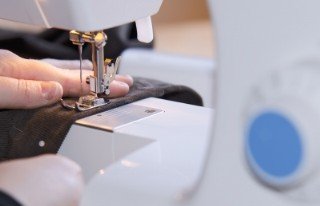Introduction to Stitching Quilt Borders
Working on quilt borders begins once you add the blocks on the material to complete the edges of the quilt. You need to calculate the slashing dimensions and block dimensions as well. If you haven't calculated the dimensions, do a simple, mental operation as in the example. Say you have three quadratic blocks, measuring ten square inches and you want to leave four one square inch blocks as a terrazzo, and you then have thirty-four square inches covered.
Creating Quilt Borders
After you are done measuring the dimensions, introduce seams measuring one quarter of an inch and remember to leave space for the fabric. Side quilt borders need to measure no more than ten inches per thirty-four inches, width per length. The final measurements also take into calculation the seams. Therefore, after you insert the seam, your piece with have ten and a half inches per thirty-four and a half inches, which is the final side. You can then cut the borders accordingly.
If you have any space left on the fabric, you can deal later with it.
The same dimensions must be used to cut additional quilt borders; these will help cover a side of the fabric and fall under the border categories of lower and upper. Piece the blocks together to calculate the total size and use the same algorithm as above. When you finish with the dimensions, work on the width of the borders.
Generally, you need to have ten inches per forty-three inches, because this is the standard dimensions for the average quilt. Dimensions may increase or decrease according to the size of the quilt, smaller or larger. After that, insert another seam, measuring one quarter of an inch, on each side while sticking to the standard dimensions. After the seams are add, you will have a ten and a half inches per forty-three and a half inches pattern, so you need to adjust the margins of the fabric.
This process of adjusting and cutting quilt borders is called a framed quilt approach, because the quilt needs to have standard measurements.
Trimming the Borders
Begin with the quilt crown, and then lower in the middle to measure the quilt. When measuring dimensions, round numbers according to the example: if the quilt measures thirty inches and a half, put down thirty inches. After that make sure you have enough room for the seam insertion, which will take up another quarter of an inch. To measure the final results, use a ruler or measuring tape. Measure along the line to give you the border dimensions. Then add the quarter of the inch the seams measure and make the calculations.
After the borders are done, you need to begin stitching the quilt. Prepare the strips to be stitched by folding them in equal two parts, and then make sure to press so that the borders crumple. Put some pins in there to mark the folding and then find the middle part of the strip halves and fold each one of them then press again and repeat the same process.
Align the center of the quilt and stitch again. The sides in the right should be joined and the crown should position itself in the center. Use pins to fix the end in a place so that you can advance with your work. Start on the length and stitch the borders, working on it and in the mean time, making sure the fabric is intact. If you are using a sewing machine, then place the material you won't be using in some other place, so that you don't mess up the fabric parts with the remaining ones. Hold the shorter layer and then stitch it slowly. The feeder in the machine will pass through the layers of material.
Then, grab the layers on the top to slow down the excess material and to allow the feeder to work on the top of the layers. Bring together the borders, stitching them to the quilt. Put one side of the fabric and set your feeder to work on the bottom of the layers. Safely take out the borders and then leave a seam for further work on the feeder.




